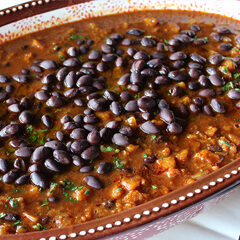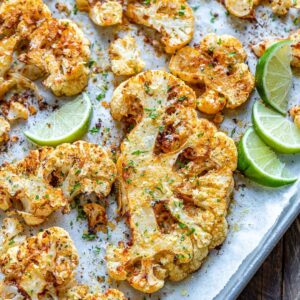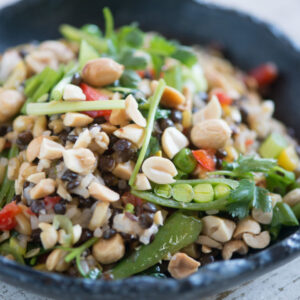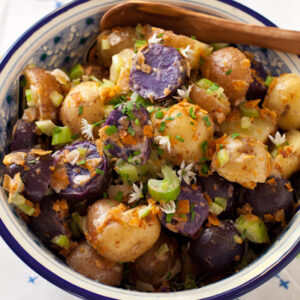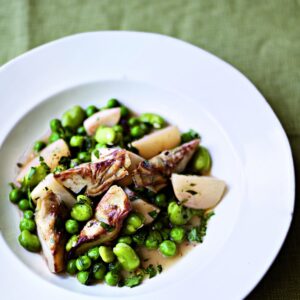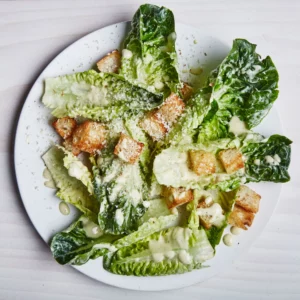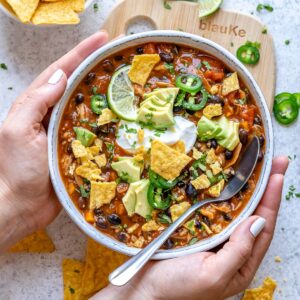9 Essential Ingredients for Making Hundreds of Meatless Meals
Making meatless meals isn’t more difficult than your average everyday cooking. It can actually be easier—when you know which ingredients to have on hand. By keeping a few special ingredients in your pantry, cupboard, and fridge, you can create hundreds of meatless meals for any time of day or occasion.
That’s because, in many cases, plant-based ingredients are more versatile than their animal counterparts. You can transform them into any number of dishes: veggie patties, soups, stews, sauces, pilafs, salads, nuggets, risotto, and even desserts. Just think of what you can do with a simple can of black beans. You can pulse them into a patty, purée them into a dip, add them to a quesadilla or burrito bowl, serve them as part of a cold salad, etc.
That being said, not all foods offer this wide a range of possibilities. So which are the special ones? It’s hard to list them all, but we’ve selected some of our favorite plant-based ingredients that you can use (in combination with other ingredients) to make hundreds of meatless meals. Along with each ingredient we’ve included a few recipes to get the creative juices flowing. This Monday, make sure to add these nine plant-based ingredients to your shopping list.
Beans
Beans are nutritious, sustainable, and inexpensive, making them one of the most cost-effective sources of protein available on the planet. But they’re also incredibly versatile: in taste, preparation, and variety. With so many different types to choose from — kidney, black, pinto, cannellini, pigeon peas, butter beans, garbanzo beans — the recipe possibilities are endless. You can mash beans up into veggie burgers or falafel patties, add them to stir-fries and pastas, or use them in burrito bowls and quesadillas. You can also get creative and use beans in place of animal proteins in your favorite foods, like these Buffalo chickpea lettuce wraps, black bean meatless balls with zucchini noodles, or baked beans.
A great alternative to meat, a head of cauliflower can be the main meal, like a cauliflower steak, or a tasty side dish, like this purple cauliflower hummus. One advantage to cauliflower is that it’s easy to cook using a variety of methods. You can steam it, roast it, boil it, pan fry it, blend it, add it to stews or curries, or turn it into fried rice or vegan Alfredo sauce. Since it can be chopped up into convenient, bite-sized pieces, cauliflower is also a good nugget or Buffalo wing substitute.
Today, there’s a number of different grains available in the supermarket or health food store beyond white rice, and you’ll be wise to try experimenting with them all. Each variety possesses its own unique characteristics. Some are nutty and toothsome, like farro, while others are aromatic and delicate, like jasmine rice. And then there’s the ancient grains, like quinoa and amaranth, which are nutrient-rich and hearty. Grains can act as a side dish or a vessel for serving stews or sauces, but they can also be the focal point of a meal, like in this mushroom farro risotto, crispy quinoa veggie burger, harvest farro salad, or this meatless brown rice jambalaya.
This is another broad category of ingredients. Mushrooms come in dozens of shapes, sizes, and varieties, but the ones most common in your typical grocery store include creminis, portobellos, shiitakes, and white button mushrooms, although you may on occasion see rarer types like oyster mushrooms or enokis. All these mushrooms behave a little differently when cooked, some are better roasting, others grilled, others raw, but in general mushrooms provide a savory flavor and meaty chew, making them great alternatives to beef. Try them in mushroom pie, mushroom bao buns, creamy mushroom pasta, or these red enchilada stacks with spicy roasted mushrooms.
When it comes to nut butters—whether it’s peanut, almond, sunflower seed, or cashew—the possibilities are limitless. You can spread them on sandwiches, add to desserts, stir into sauces, or drop a spoonful into oatmeal or even chili. But nut butters aren’t just a great way to boost flavor; they’re also an excellent source of plant-based protein and healthy fats. An opened jar of peanut butter will last 5-8 months if refrigerated, offering you plenty of time to try these recipes for chocolate peanut butter mousse, overnight apple oatmeal, and nutty granola crunch.
Potatoes have a lot going for them: they’re nutritious, inexpensive, versatile, and they keep for months when stored in a cool, dark space. And when you have potatoes in your pantry, you’re never too far away from dozens of meals. You can go simple, like these roasted potatoes with chimichurri or a side dish of potato salad with coconut bacon. But you can also go a little more elaborate, and try cooking a bubbling Caribbean lentil and potato bake. Check out our catalog of potato recipes for more inspiring spuds.
It’s easy to forget about the importance of vegetable stock, but this pantry staple can serve as the foundation of vegetarian soups, pilafs, sauces, ragout, grits, and even pot pies. Vegetable stock has a long shelf-life, so it’s a good idea to stock up on a few boxes so you never run out unexpectedly. Some particularly tasty recipes that use vegetable stock include, vegan khao suey, peanut stew with chickpeas and kale, and this lemony spring risotto.
Inexpensive, packed with protein, and easy to store, tofu is an indispensable wonder food that you simply must have in your refrigerator at all times. Tofu is sold in different levels of firmness, which can range from silken (pillowy and custard-like) to extra firm (spongy). The less-firm varieties have higher water content, making them better for cream and dairy replacements. You can use tofu to make all of your favorite comfort foods, from plant-based Caesar dressing to “chicken fried” tofu steaks to Jamaican jerk tofu. The possibilities are endless. Just remember to properly press tofu to remove all the moisture and ensure a crispy end product.
Canned tomatoes can add depth and flavor to a number of different types of meatless meals. Tortilla soup, minestrone, vegetarian chili, pasta arrabiata, lasagna, sloppy joe’s, stuffed peppers, and creamy curries all benefit from the addition of a canned tomato product. And since they’re canned, you can store them in your pantry for months without risk of them spoiling.
Click here for more Meatless Monday recipes. When posting pictures of recipes to your social media network, tag @MeatlessMonday use #MeatlessMonday to show the plant-based community your creation.

